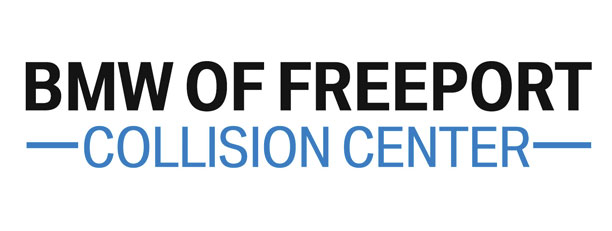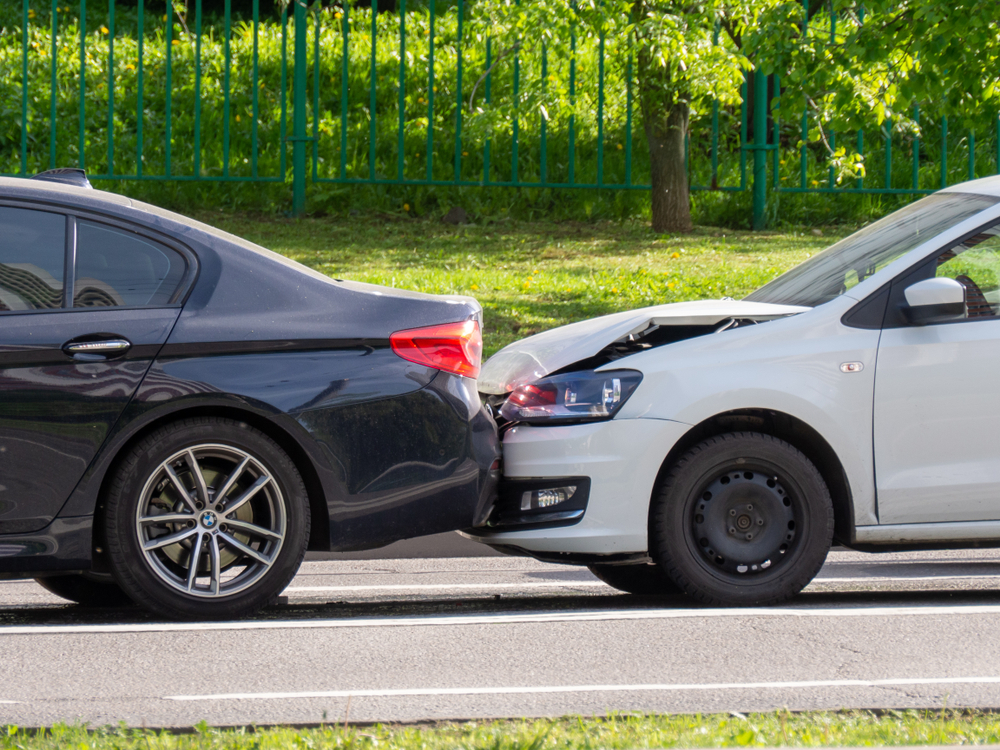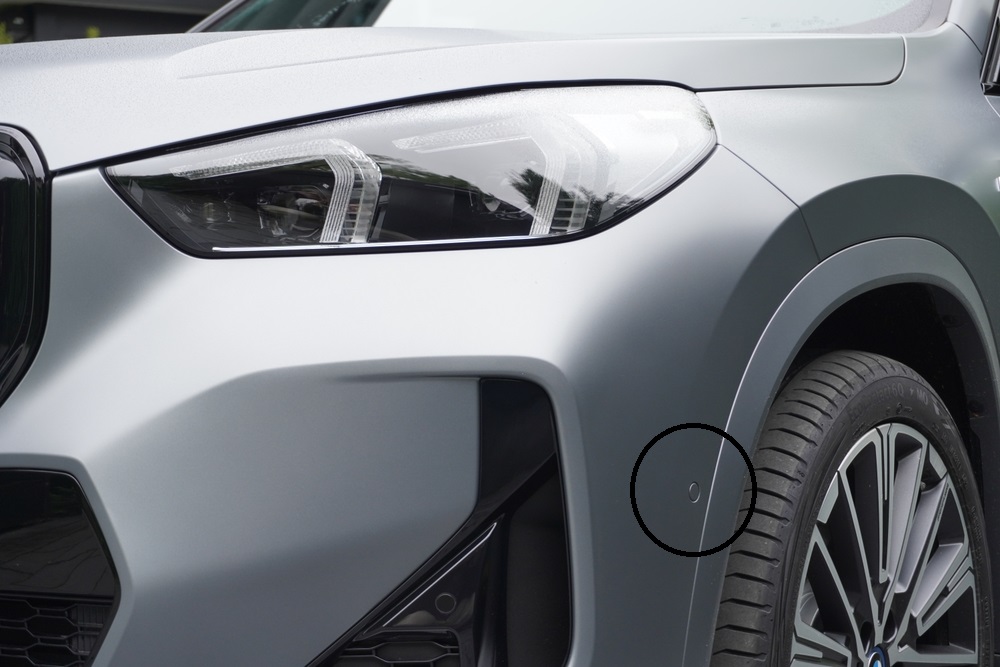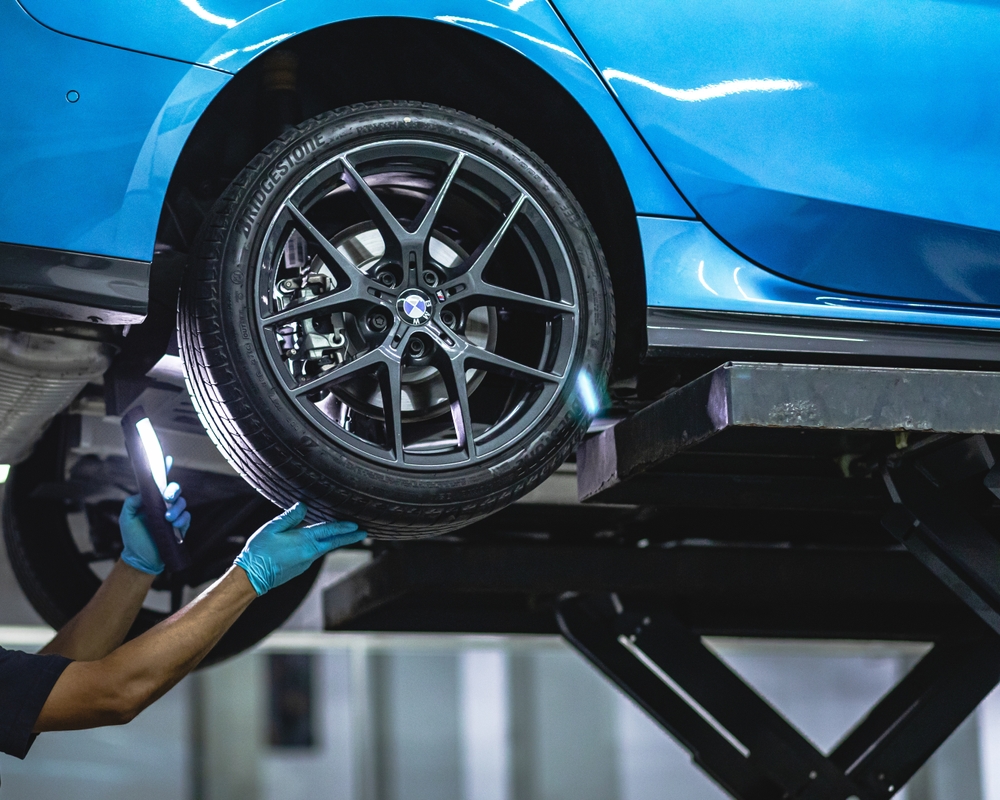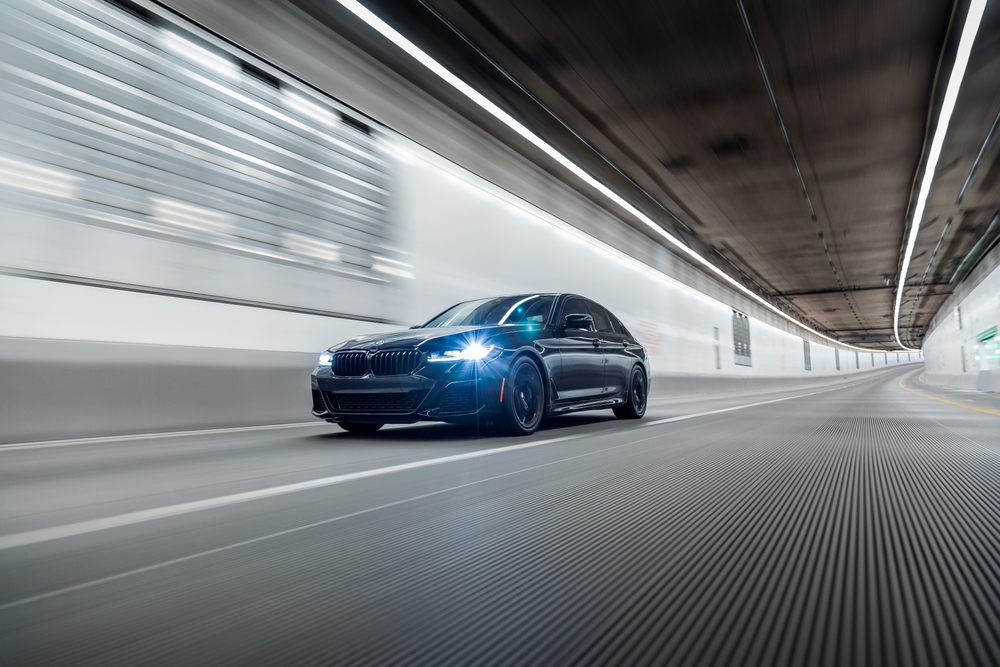That moment when traffic suddenly slows on the LIE and you find yourself in a minor collision can shake anyone. Your BMW looks mostly fine—maybe just a small dent or scratch—but here’s what many Long Island drivers don’t realize: even the slightest impact can throw off your vehicle’s advanced safety systems. While you’re dealing with insurance paperwork and wondering if the damage is really “just cosmetic,” your BMW’s sophisticated sensor network might be silently compromised, putting you and your passengers at serious risk during your next drive through Nassau County’s busy highways.
When over 37,770 crashes occurred on the LIE from 2012 to 2023, with 82 fatalities and 682 severe injuries as of 2023, it became clear that this 71-mile stretch isn’t just another highway—it’s one of the most collision-prone roadways in New York. At BMW of Freeport Collision Center, we understand that what appears to be minor damage often hides critical safety system disruptions that require immediate professional attention. That’s exactly why our certified technicians specialize in precise BMW sensor recalibration, ensuring your vehicle’s advanced driver assistance systems work flawlessly after any collision, no matter how minor it might seem.
It Was Just a Minor Hit – Or Was It? The Hidden Dangers of a Fender Bender in Your BMW
You’re sitting in LIE traffic near Jericho, moving slowly toward your exit, when the car ahead stops abruptly. Despite your best efforts, you tap their bumper at maybe 5 mph. Both drivers pull over, exchange information, and you notice barely any visible damage to your BMW. The other driver seems fine too, so you both decide it’s hardly worth reporting. But here’s the problem: your BMW’s intricate sensor system doesn’t care how “minor” the collision looked to the human eye.
According to industry experts, “a sensor on the car that is out of alignment by a fraction of an inch or even one degree will be aimed at an area significantly off axis 50 or more feet down the road.” This means your BMW’s forward collision warning system might be scanning the wrong area entirely, potentially missing an actual hazard while you’re merging onto the Southern State Parkway later that week. Even worse, research shows that “a change as little as .6 degrees would cut the reaction time of automatic emergency braking in half.”
What makes this particularly dangerous for Long Island drivers is that traffic deaths have increased 40 percent since 2019 on Long Island, with over 250 people dying in accidents in Suffolk and Nassau counties in 2022. Your BMW’s advanced safety systems are designed to help prevent you from becoming part of these statistics, but only when they’re properly calibrated. When sensors are misaligned after even a minor impact, you’re essentially driving without the safety net you paid for, unknowingly putting yourself and other commuters on busy roads like Route 110 or Hempstead Turnpike at unnecessary risk.
What Are ADAS Sensors and Why Do They Matter for Your NEW BMW?
Your new BMW isn’t just a luxury vehicle—it’s essentially a computer on wheels, packed with cameras, radar sensors, and ultrasonic devices working together seamlessly. These components make up what’s called Advanced Driver Assistance Systems (ADAS), and they’re constantly monitoring everything around your vehicle. The National Highway Traffic Safety Administration defines these systems as technologies that “alert drivers with an audio or visual warning” and can “apply the vehicle’s brakes automatically in time to avoid or mitigate an impending forward crash.”
Think about your daily commute from Freeport to Manhattan or Garden City. Your BMW’s adaptive cruise control maintains a safe following distance automatically, while lane-keeping assistance gently guides you back if you drift toward another lane. The blind spot monitoring system alerts you when changing lanes on the crowded Belt Parkway, and forward collision warning gives you precious extra seconds to react when someone suddenly brakes ahead. These aren’t luxury conveniences—they’re genuinely life-saving technologies that work together like an invisible safety team.
But here’s what most BMW owners don’t understand: all these systems “require precise calibration, particularly after collision repairs, wheel alignment, or sensor replacements.” Your BMW’s forward-facing camera, typically mounted near the rearview mirror, needs to know exactly where it’s pointing to detect lane markings accurately. The radar sensors behind your front bumper must be aimed precisely to measure distances correctly. When any of these components shift even slightly during a collision, the entire safety system becomes unreliable, turning your sophisticated BMW into a potential liability on busy Long Island roads.
The Problem: Why a LIE Fender Bender Knocks Your BMW’s Sensors Out of Alignment
The Long Island Expressway presents unique challenges that make sensor misalignment particularly dangerous. Between exit ramps and intersections, multiple reports show drivers hitting speeds of 100+ mph despite heavy congestion, creating stop-and-go conditions that lead to frequent rear-end collisions. When your BMW gets bumped during one of these traffic situations, several critical components can shift position without any visible external damage.
Consider what actually happens during that seemingly harmless 5 mph tap. Your BMW’s front bumper contains multiple radar sensors that measure distances to other vehicles, while cameras mounted on the windshield track lane markings and road signs. Even after “any type of front-end collision, even a minor fender bender, the ADAS sensors and cameras may have shifted slightly, requiring recalibration to maintain accuracy.” The force that barely dents your bumper can easily move a sensor bracket by a fraction of an inch—enough to throw off the entire system’s precision.
What makes this especially problematic for Nassau County drivers is how quickly you’ll encounter situations where perfectly calibrated sensors matter. Maybe you’re merging from the LIE onto the Cross Island Parkway during rush hour, relying on your blind spot monitoring to change lanes safely. Or perhaps you’re navigating the busy intersections near Roosevelt Field Mall, depending on your automatic emergency braking to stop if a pedestrian steps into traffic. When these systems are even slightly miscalibrated, they might fail precisely when you need them most, potentially turning a routine drive into a dangerous situation.
The Solution: Professional ADAS Recalibration at a Certified Collision Center
Getting your BMW’s sensors properly recalibrated isn’t something you can handle at just any repair shop or even attempt yourself. The process “demands high-precision tools like laser alignment systems and specialized targets” because “only specialized equipment can ensure sensors are correctly aligned, maintaining the accuracy of safety features.” This is exactly why BMW requires specific certification and training for collision centers working on their vehicles.
Professional ADAS recalibration involves two distinct processes: static calibration, which happens in a controlled shop environment using precise targets and laser alignment, and dynamic calibration, which requires driving the vehicle under specific conditions to teach the sensors their new positions. For BMW vehicles specifically, “recalibration is necessary after any suspension work” because “changes in ride height can affect the alignment of radar and camera sensors.” This means even seemingly unrelated repairs can impact your safety systems.
At a certified collision center, technicians use manufacturer-approved equipment and follow BMW’s exact specifications for each sensor type. They’ll verify that your forward collision warning system can detect vehicles at the proper distances, ensure your lane departure warning activates at the correct threshold, and confirm that your adaptive cruise control maintains appropriate following distances. This comprehensive approach means you’re not just fixing what appears broken—you’re restoring your BMW’s complete safety profile to factory standards, giving you confidence whether you’re navigating the congested LIE or cruising down quieter roads like Ocean Parkway.
Why You Can’t Trust Just Any Body Shop with Your BMW’s Advanced Technology
When you’re dealing with the aftermath of a collision on Long Island, you might be tempted to choose the closest or cheapest repair option. But your BMW’s sophisticated technology demands specialized expertise that most general auto body shops simply don’t possess. BMW-specific repair considerations include understanding that “paint film thickness can affect the performance of ADAS radars” and that “color formula selection may also be a contributing factor.” This level of technical knowledge isn’t something you’ll find at every corner repair shop.
Generic body shops often lack the specific diagnostic equipment needed to properly assess BMW’s complex sensor networks. They might fix the visible damage and send you on your way, but without proper calibration tools and BMW training, they can’t verify that your safety systems are working correctly. Industry experts note that “items that historically would be a simple repair may now need to be replaced” because “repair material that would normally be used to repair a gouge in a bumper cover is now a problem because it can block the sensor’s field of vision.”
What’s particularly concerning for BMW owners is that improper repairs can actually make your vehicle less safe than before the accident. Imagine trusting your adaptive cruise control during heavy traffic on the LIE, only to discover it’s not maintaining proper following distances because a sensor was incorrectly aligned. Or consider depending on your automatic emergency braking while driving through busy areas like Hempstead Village, not knowing the system’s reaction time has been compromised by amateur calibration work. These scenarios aren’t just inconvenient—they’re genuinely dangerous, putting you and other drivers at serious risk during routine daily commutes across Nassau County.
The Dangers of Improper Sensor Recalibration After a Collision
The consequences of driving with improperly calibrated BMW sensors extend far beyond inconvenience. Incorrectly aligned sensors can lead to “false warnings or system failures, compromising safety,” while also potentially causing “false positives or negatives” in automatic emergency braking systems. For Long Island drivers navigating busy routes like Northern State Parkway or Sunrise Highway, these malfunctions can create dangerous situations where you either receive unnecessary alerts or, worse, miss critical warnings entirely.
Consider how these failures might affect your typical driving scenarios around Nassau County. Your lane departure warning might constantly beep while you’re properly centered in your lane on straight stretches of Meadowbrook Parkway, causing you to ignore the system entirely—including when you actually need the alert. Alternatively, your blind spot monitoring might fail to detect vehicles in adjacent lanes while you’re changing lanes near busy exits like those around Garden City or Westbury, leaving you vulnerable to side-impact collisions.
The financial implications are equally serious. Insurance companies increasingly expect vehicles to have properly functioning safety systems, and liability questions become complex when accidents occur with malfunctioning ADAS technology. Professional calibration ensures that “all parts work seamlessly together” which “extends the lifespan of your vehicle’s complex electronic systems.” When you skip proper recalibration, you’re not just risking immediate safety—you’re potentially facing expensive electronic system failures down the road, plus the possibility of insurance complications if your compromised safety systems contribute to a future accident.
Your Local Freeport Experts for BMW Collision Repair and Recalibration
Located in the heart of Nassau County, BMW of Freeport Collision Center serves as “Long Island’s Premier Collision Repair Center” where “certified and trained technicians” work exclusively on luxury vehicles using “rigid factory procedures and guidelines to ensure your vehicle is repaired back to pre-accident condition.” This isn’t just marketing language—it represents a genuine commitment to maintaining the sophisticated technology that makes your BMW both luxurious and safe on Long Island’s demanding roadways.
What sets our Freeport facility apart is our comprehensive understanding of both collision repair and advanced automotive technology. We maintain an “in-house claims department” that “will work with your insurance company so you don’t have to go through any additional aggravation,” while our certified technicians handle the complex technical work of restoring your BMW’s sensor systems to factory specifications. This means you get both convenience and expertise, avoiding the hassle of coordinating between multiple service providers while ensuring your vehicle receives the specialized attention it deserves.
Our commitment to excellence extends beyond just fixing what’s broken. We believe “your luxury automotive experience should be a comprehensive one” based on “Quality First, Courtesy First, Customer First.” For BMW owners throughout Freeport, Merrick, Hempstead, and the surrounding Long Island communities, this means receiving transparent communication about necessary repairs, access to genuine auto parts that maintain your vehicle’s integrity, and the confidence that comes from knowing your BMW’s advanced safety systems will perform exactly as designed during your next drive through busy Nassau County traffic.
BMW ADAS Systems: Common Types Requiring Calibration
| ADAS System | Primary Function | Sensor Location | Calibration Trigger | Safety Impact When Misaligned |
|---|---|---|---|---|
| Forward Collision Warning | Detects potential frontal impacts | Front bumper radar | Any front-end collision | Delayed or missed collision warnings |
| Lane Departure Warning | Monitors lane position | Windshield-mounted camera | Windshield replacement or impact | False alerts or missed lane drifting |
| Adaptive Cruise Control | Maintains following distance | Front radar sensors | Front bumper damage or repair | Incorrect following distances |
| Blind Spot Monitoring | Detects vehicles in blind spots | Rear bumper or mirror sensors | Rear or side impact damage | Undetected vehicles during lane changes |
| Automatic Emergency Braking | Prevents or reduces collision severity | Multiple front sensors | Any sensor displacement | Reduced reaction time or system failure |
Signs Your BMW’s Sensors Need Professional Attention
After any collision on Long Island roads, BMW owners should watch for these warning signs that indicate sensor recalibration is necessary:
- Dashboard Warning Lights: Any ADAS-related warning symbols appearing on your instrument cluster, especially those related to collision avoidance or lane-keeping systems
- Erratic System Behavior: Your adaptive cruise control suddenly disengaging without cause during highway driving, or lane departure warnings activating when you’re properly centered in your lane
- False Alerts: Blind spot monitoring constantly indicating vehicles that aren’t there, or forward collision warnings triggering inappropriately during normal following distances
- Complete System Shutdown: Any safety system that stops working entirely after your collision, even if the impact seemed minor and caused no visible damage
- Inconsistent Performance: Safety features that work intermittently or seem less responsive than before your accident, particularly during routine driving situations on familiar Long Island routes
Frequently Asked Questions
Q: What are the signs that my BMW’s sensors need to be recalibrated?
A: Watch for dashboard warning lights related to ADAS systems, erratic behavior from adaptive cruise control or lane-keeping assistance, false alerts from blind spot monitoring, or any safety system that stops working after your collision. Even if these symptoms seem minor, they indicate potentially serious calibration issues that require professional attention.
Q: Is sensor recalibration covered by my insurance after an accident?
A: Most comprehensive auto insurance policies cover ADAS recalibration when it’s necessary due to collision damage. Our in-house claims department works directly with insurance companies to ensure proper authorization and coverage for all required calibration procedures, taking the hassle out of the approval process for you.
Q: How long does BMW sensor recalibration take?
A: Professional BMW sensor recalibration typically takes several hours to complete properly, depending on which systems require attention. The process involves both static calibration using specialized equipment in our facility and dynamic calibration that may require test driving under specific conditions to ensure all systems function correctly.
Q: Can I drive my BMW if the sensors are not calibrated?
A: While your BMW may still run normally, driving with uncalibrated sensors significantly compromises your safety systems’ effectiveness. We strongly recommend avoiding highway driving or busy Long Island roads until proper recalibration is completed, as your collision avoidance and driver assistance features may not function when you need them most.
Q: Why is it important to use a BMW-certified collision center for repairs?
A: BMW’s advanced technology requires specialized diagnostic equipment, manufacturer-approved calibration procedures, and technician training that general repair shops don’t possess. Using a certified center ensures your vehicle meets factory safety standards and maintains warranty coverage while avoiding potential complications from improper repairs.
Schedule Your BMW Sensor Recalibration Today
Don’t let compromised safety systems put you at risk during your daily commutes around Nassau County and Long Island. The certified BMW experts at BMW of Freeport Collision Center are here to restore your advanced driver assistance systems to factory precision, whether you drive a brand-new BMW X3 or a trusted 3 Series that’s been serving you reliably for years. We have the specialized diagnostic equipment, genuine BMW parts, and manufacturer-approved procedures to handle any ADAS calibration issue accurately and efficiently.
With Long Island’s traffic fatality rates increasing 40 percent since 2019 and with thousands of accidents occur annually on the LIE alone, waiting to address sensor calibration problems only makes your vehicle more dangerous and potentially puts you at serious risk when you need those safety systems most. Our comprehensive diagnostic approach identifies exactly what your BMW’s sensors need, ensuring you get proper calibration that restores complete safety functionality rather than temporary fixes that fail during critical moments.
Schedule your post-collision inspection today and get back to confident driving!
Or visit us at 153 E Merrick Rd, Freeport, NY 11520, and let our factory-trained technicians ensure your BMW’s safety systems protect you throughout Long Island’s demanding traffic conditions.
